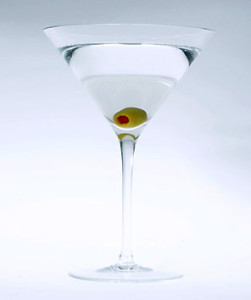How Do You Like Dem Apples?
November 19, 2004
Just a short column to let you all know I haven’t fallen off the face of the earth. Being in the food and wine biz this time of year gets a bit crazed. Out in the non-electronic world I’ve gotten several requests recently for good old-fashioned apple pie. Things like “what’s the world’s most amazing apple pie recipe?” and other easy demands to respond to like that.
Well, I’ll tell you. I haven’t a clue. There are probably a gazillion recipes out there for apple pies, and I’ve only tried a few of them. Truthfully, I tend to go about as simple as I can when I make an apple pie, which isn’t very often. You can use something basic from the Time-Life Good Cook series, or that long-famed kitchen staple, The Joy of Cooking. Or your mother’s recipe. Hey, if you think you’ve got the world’s best apple pie recipe, I’d love to hear about it and try it out.
What I do make pretty regularly with apples is an old Ukranian-Belarusian (somewhere out there) sort of apple pie-cake-crumbly kinda thingie. The recipe isn’t my own and it’s been reproduced in Eastern European cookbooks for eons, but damned if it isn’t really easy and really good! It’s usually referred to as something like “Guest at the Door Apple Cake”, for reasons that should be apparent from the name.
This comes out best if you use a 9″ springform pan, but any deep dish pie, tart, or cake pan will do. You can even do this in a cast iron skillet if you want!
Butter the inside of the pan and sprinkle with bread crumbs or flour to prevent the cake from sticking. Preheat oven to 350F.
Take six large, tart apples and peel, core, quarter and then slice them. Toss the apple segments with a teaspoon of ground cinnamon. Put them in the buttered pan.
In a mixing bowl, whisk or beat together 3 large eggs and just under a cup of sugar (don’t ask me why, but a full cup makes it too sweet, so take out a heaping spoonful). Beat this until it is pale yellow and forms a ribbon when your whisk or beaters are lifted.
By the way, what that means is… if you lift the egg beater, or electric mixer, or hand whisk out of the mixture, it kind of drizzles off and leaves a ribbony looking trail that takes a moment or two to sink in, rather than just streaming off and disappearing into the bowl.
Gradually beat in one and a half cups of all purpose flour. The batter will get pretty thick. Pour the batter relatively evenly over the apples. Bake until it turns puffy and golden colored, about 50-60 minutes, depending on your oven, the pan, etc. Let cool for a little and serve with whatever you like to serve on appley things – whipped cream, ice cream…
On other apple topics, since I promised I’d throw in some booze sort of tasting notes, some drinking thoughts:
Apple cider. Not the stuff in big gallon jugs that’s brown and filled with sediment from apples and your parents made you and all that…
Traditional French, English or American (they’re the only ones I know who make the stuff) alcohol-type apple cider. There are lots of producers out there of these. Two favorites:
Farnum Hill apple ciders, from Lebanon, New Hampshire. Made in relatively dry styles, these, to me, taste like very delicately apple scented light beers. They are quite yummy, and well worth checking out. Farnum Hill distributes primarily in the northeast U.S., but you can hit their website at www.farnumhillciders.com and who knows, maybe you can score some!
Eric Bordelet produces amazing apple and pear ciders in France. They range from relatively dry to relatively sweet. My faves are the Argelette for the apple and the Granit for the pear, but they’re all worth seeking out and trying. Once you taste these you’ll be hooked!
I’m also a huge fan of calvados. This is brandy made from apple and pear wine rather than grape wine. You get all that warming fire that is what good brandy is all about, with a delicious touch of apple fruit. Not sweet! My favorite producer is Christian Drouhin who makes a regular “Selection” calvados and stunningly good vintage calvados under the Coeur du Lion label. The vintage ones make great gifts!
I started writing food & wine columns for the Outlet Radio Network, an online radio station in December 2003. They went out of business in June 2005.


